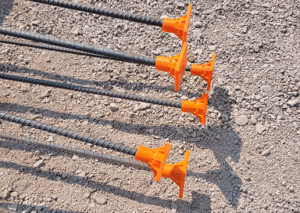
A PDI course (Pre-Delivery Inspection) is specialized training that teaches participants how to perform structured inspections on Mobile Elevating Work Platforms (MEWPs) before they are delivered or put into service. The IPAF PDI course is a globally recognised program ensuring legal compliance, safety, and maintenance standards. A PDI teacher course prepares instructors to deliver PDI courses themselves using best practices, curriculum, and assessment tools. In Australia, these courses must align with national work safety laws and often tie into the PAL (Powered Access Licence) system.
Introduction to PDI Courses and Their Significance
In the powered access industry, ensuring machinery is safe, compliant, and fully operational before it reaches a work site is non-negotiable. That’s precisely where a PDI course (Pre-Delivery Inspection) becomes vital. For companies in Australia operating MEWPs (Mobile Elevating Work Platforms), having personnel trained via the IPAF PDI course ensures that equipment is delivered in safe condition, defects are caught early, and legal obligations are met.
But there’s more. Forward-thinking organizations train instructors through PDI teacher courses so that they can deliver, maintain, and audit PDI training in-house. If you’re in Australia and want to build your credentials in the access industry, this is your guide to understanding these courses, how to enrol, what to expect, and how to excel.
What Is the IPAF PDI Course?
Understanding IPAF and the Role of PDIs
IPAF (International Powered Access Federation) is a globally recognised body that sets standards for powered access training, safety, and inspection. Their Pre-Delivery Inspection (PDI) course is designed to teach qualified personnel how to systematically inspect MEWPs before they are put into use. ipaf.org+1
A PDI is a systematic inspection protocol, conducted before delivery or handover, to confirm that the machine:
-
Is free of damage or defects
-
Operates smoothly in all functions
-
Adheres to its manufacturer’s specifications
-
Complies with relevant safety legislation
In Australia, where work health and safety (WHS) laws mandate that lifting equipment be maintained and regularly inspected, a strong PDI program helps ensure compliance and mitigates risks of machine failure or injury.
Who Should Take an IPAF PDI Course?
The target audience includes:
-
Service technicians or mechanics working in MEWP rental and servicing companies
-
Depot staff responsible for preparing machines
-
Safety and maintenance engineers who oversee fleet readiness
-
Supervisors who verify that delivered machines meet quality and safety standards
You often need prior exposure to MEWPs or holding a valid IPAF PAL card to enroll — some PDI courses require that you’ve held a PAL for several months. Horizon Platforms
What Does the Course Cover?
The curriculum blends theory and practical instruction, covering topics such as:
-
Relevant legislation, codes of practice, and WHS obligations
-
Common MEWP faults and how to detect them
-
How to use inspection checklists and documentation
-
Function checks, visual inspections, and load assessments
-
Classification categories of MEWPs and special considerations
-
Hands-on practice on real machines
-
Formal assessments (practical + theory)
The goal is to provide participants the confidence and competence to pass or reject a MEWP before it hits a site. Horizon Platforms+1
After successful completion, participants often receive a PDI or “INSP” licence or endorsement, valid for a fixed period (often five years under IPAF rules). Horizon Platforms+1
What Is a PDI Course (Generic)?
While “PDI course” often refers to the IPAF PDI training, it can also describe any structured training program that teaches inspection and pre-deployment checking operations in other domains (e.g. automotive, machinery, equipment). In the context of powered access, however, “PDI course” is usually synonymous with the IPAF standard.
When optimizing for SEO, you may also see variations like:
-
MEWP PDI course
-
Pre-delivery inspection training
-
PDI inspection for mobile platforms
-
PDI safety course for access equipment
These long-tail variations help capture relevant traffic from professionals searching for those specific terms.
What Is a PDI Teacher Course?
A PDI teacher course is aimed at experienced professionals who want to become certified instructors in PDI or inspection training programs. Instead of merely performing inspections, graduates of a teacher course gain skills in:
-
Designing curriculum and lesson delivery
-
Conducting assessments and evaluations
-
Applying instructional best practices
-
Ensuring compliance with IPAF or regulatory instruction standards
-
Auditing and quality control of training sessions
In Australia, if a training provider wants to offer IPAF PDI courses internally, they typically must employ or contract a PDI-certified instructor. That makes the PDI teacher training pathway strategic for organisations seeking to internalize training delivery.
You might also see the term “PDI teacher training,” “PDI instructor course,” or “PDI trainer certification” used in this context.
Why Choose PDI Courses in Australia?
Regulatory and Safety Imperatives
Australia has strict regulations governing workplace safety, machinery standards, and lifting equipment. Training staff to perform PDIs helps companies:
-
Comply with WHS, state safety laws, and codes of practice
-
Reduce liability risks by catching defects before deployment
-
Improve reliability and uptime of MEWPs
-
Demonstrate due diligence in maintaining safe plant operation
Market Demand and Competitive Edge
As more construction, mining, facilities management, and infrastructure firms in Australia adopt elevated work platforms, the demand for certified inspection professionals increases. Having PDI credentials gives you a competitive edge in roles such as fleet manager, service engineer, or training provider.
Local Training Centres and IPAF Affiliates
Australia has IPAF-affiliated training bodies and EWP (Elevating Work Platform) training centres. These providers often offer combined courses (operator, inspection, load/unload) and sometimes deliver the PDI course as part of a full powered access certification package. abslift.com.au
Furthermore, IPAF’s training centre locator includes filters for “Pre-Delivery Inspections (PDI)” for Australia, making it easier to find local courses. ipaf.org
How to Enroll in a PDI / IPAF PDI Course in Australia
Step by Step
-
Identify IPAF-accredited training centres in your state (e.g., Queensland, NSW, Victoria, WA, etc.). Use IPAF’s centre locator and filter for PDI. ipaf.org
-
Check prerequisites — you may need prior IPAF PAL certification or experience on MEWPs.
-
Review course goods — ensure the training covers both theory and hands-on inspections.
-
Register and attend — typically delivered in one full day or a half day plus assessment.
-
Complete assessment — both practical and theory exams.
-
Receive your certificate or licence — valid for a set term (often 5 years), with renewal or refresher options.
When selecting your provider, make sure their program is approved by IPAF to ensure your PDI qualification is globally recognised.
Benefits of Completing a PDI / IPAF PDI Course
-
Enhanced safety and inspection quality — you gain deeper technical expertise and can spot defects reliably
-
Regulatory compliance — accepted under IPAF standards, your inspection credentials carry weight
-
Career advancement — open doors to supervisory, inspection, or training roles
-
Reduced downtime — early defect detection means fewer breakdowns in deployment
-
Training capability — become a PDI instructor (if you proceed to a teacher course)
Related Keywords and Semantic Entities to Use in Optimization
When writing or optimizing pages on this topic, include these related terms to help with semantic relevance:
-
Powered Access Licence (PAL)
-
MEWP inspection
-
Elevated Work Platform inspection
-
WHS compliance for lifting equipment
-
Site delivery checks for access platforms
-
Inspection checklist for MEWP
-
Access equipment pre-use inspection
-
IPAF instructor certification
-
Maintenance and safety of MEWPs
These terms complement “pdi course,” “ipaf pdi course,” and “pdi teacher course” in the article and help strengthen semantic SEO signals.
Common Questions About PDI Courses
Is prior IPAF experience required for PDI courses?
Often yes. Many PDI courses require that attendees already hold a PAL card or have logged prior hours using MEWPs, to ensure they have a baseline understanding. Horizon Platforms
How long is a PDI / IPAF PDI course valid?
Typically the licence or endorsement lasts for a fixed number of years (for example, five years). After that you may need to take a refresher or re-assessment. Horizon Platforms+1
Does a PDI course cover all categories of MEWPs?
Yes, PDI training generally covers inspecting different categories (scissor lifts, boom lifts, mast lifts) and checking all mechanical, hydraulic, and structural components.
Can I teach PDI courses after completing a PDI teacher course?
Yes — a successful PDI teacher or instructor certification allows you to deliver PDI training to others, subject to approval by IPAF or your regional accreditation authority.
What is the cost of a PDI course in Australia?
Costs vary depending on provider, location, and whether it’s bundled with other IPAF training, but expect a professional one-day inspection course to incur a premium rate reflecting the technical nature and specialist equipment.
How to Structure a PDI Training Program for a Company
If your organisation wants to deliver PDI training internally, consider the following structure:
-
Accredit a PDI instructor via a teacher course
-
Develop standard lesson plans and checklists aligned with IPAF guidelines
-
Maintain a training schedule and competency records
-
Conduct periodic audits and refresher sessions
-
Track inspection findings and corrective actions to feed back into training
-
Integrate with maintenance and service workflows
This integrated system promotes ongoing compliance, knowledge retention, and equipment safety.
Best Practices for PDI Inspectors
-
Always use manufacturer checklists and follow the operations manual
-
Document every defect, even minor ones
-
Use clear “pass / fail / attend to repair” decisions
-
Stay current with legislative changes or updates to codes of practice
-
Maintain a logbook of inspections and training hours
-
Use photographic evidence and reports for traceability
-
Continually refresh underlying technical knowledge
Conclusion
If you’re involved in powered access in Australia — whether as a technician, supervisor, safety officer, or future trainer — undertaking a PDI course is a strategic step forward. The IPAF PDI course represents the gold standard in inspection training, recognized globally for integrity and safety. Meanwhile, progressing into a PDI teacher courses gives you the power to shape others in your organisation or industry.
By aligning your PDI training with Australian WHS law, selecting accredited providers, integrating best practices, and optimizing your content around semantic keywords, you position yourself (or your organization) to lead within the access safety space.
If you like, I can help you map out a sample training calendar for Australia with state-w

